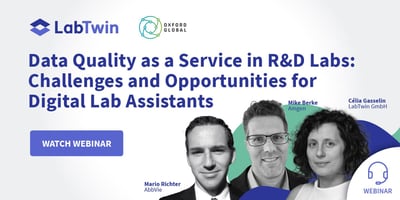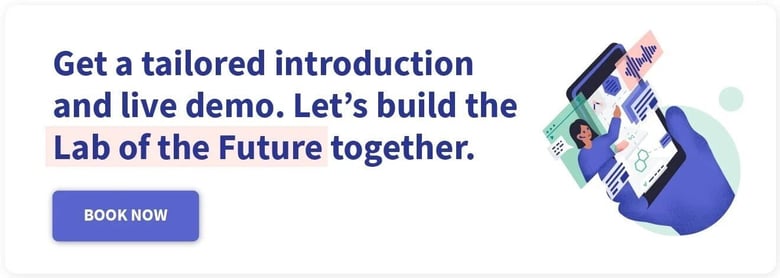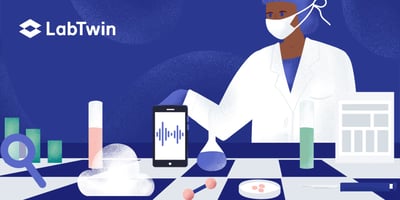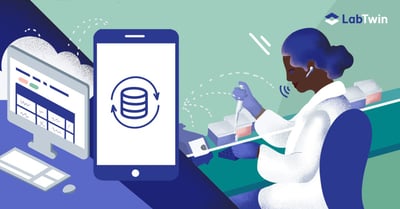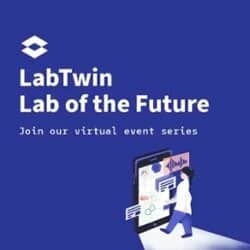Pharmaceutical companies are striving to harness the power of Artificial Intelligence (AI) to turn rich data resources into strategic assets.
The main challenge, however, is achieving uniformly high data quality across an organization. Based on Natural Language Processing and Machine Learning technologies, digital lab assistants enable scientists to seamlessly capture accurate, real-time experimental data together with context and related metadata. Digital lab assistants, therefore, work to improve data quality.
Mike Berke, Director of Research & Automation Technologies at Amgen, and Mario Richter, Director at AbbVie, recently joined a LabTwin roundtable to discuss current data initiatives in pharmaceutical organizations and the efforts still to be made to ensure data quality and completeness.
Enabling data-driven decisions
The biggest factor driving data digitalization in pharmaceutical companies is the need to draw insights from available data. Multiple factor analysis can help troubleshoot experiments, finds sources of errors or deviations, and accelerate development of new drugs by finding patterns in the data. However, in order to run large-scale analysis, the data must be comparable between labs or days.
“Metadata is what makes the data comparable in the end.” Mario Richter, Director at AbbVie.
To successfully integrate data from different sources, metadata, such as the equipment used or the temperature of the room, must be captured, labelled and linked to each data set. Digital lab assistants facilitate real-time metadata collection.
Capturing high-quality data from scientists
If over the years, machine learning and AI have significantly improved data processing, surprisingly little has changed regarding note taking, which usually still requires scientists to interrupt their experiments to take a combination of paper notes and records typed into an electronic lab notebook (ELN).
“It took her thirteen mouse clicks, four windows, five menus to find the check box she needed in the ELN. Reporting directly in the ELN was the most excruciating part of her job and made her lose her focus.” Mike Berke, Director at Amgen.
Delays in documentation often result in lower data quality. The solution is to collect data in real-time during experiments. However, this can be very difficult during complex workflows.
“Collecting the data, right at the place where it is generated, is where I think there is quite a bit of room for improvement.” Mario Richter, Director at AbbVie.
Real-time data management has been tackled in our everyday life with the ubiquitous presence of smartphones. It is only natural to wish for the same easy access to the digital world in the lab. However, tactile interactions with mobile devices at the bench remain difficult. Pharmaceutical companies report that tablets distributed to scientists were not successful in solving the challenge of real-time data collection and access in spite of their portability.
“The user interface’s ability to collect that data at the bench is very important.” Mike Berke, Director at Amgen
Voice interfaces bypass this accessibility challenge by providing a seamless way to interact with a digital system through verbal guidance and voice inputs. With voice-activated digital lab assistants, scientists can easily collect data and access information even when their hands are busy with an experiment. LabTwin customers report a two- to three-fold increase in the quantity of data captured when using the digital lab assistant instead of paper notes or typing into ELNs. These improvements come from lowering the barrier to data collection.
Connecting the dots
Pharma companies also face the major challenge of how to trace all the data collected during different steps of an experiment. This is especially the case during a workflow where automated and manual processes are intertwined.
“At each station, data is created, but the linkage between these stations is what is missing. If I want to retrieve all the information available on a sample, that is almost impossible today.” Mario Richter, Director at AbbVie
Often, the only common link between experimental steps is the scientist and his or her memory. But with a digital lab assistant, information is recorded about every action and its context, connecting all the different parts of an experiment to provide an end-to-end narration of the workflow. Moreover, a digital lab assistant is able to collect the data in a structured manner and to facilitate integration with the existing lab informatics system by automatically pre-processing the data and uploading it to the appropriate repository.
From dead data to valuable asset
“I think that in one or two years, the models will be trained and mature and helping us to make better decisions.” Mike Berke, Director at Amgen
Once companies have overcome the challenge of integrating data from different sources, and AI models are fueled with high-quality data, the hope is to loop back the data funnel to the bench and drive new experiments based on the latest results.
Learn more by listening to the full discussion: unlock recording


